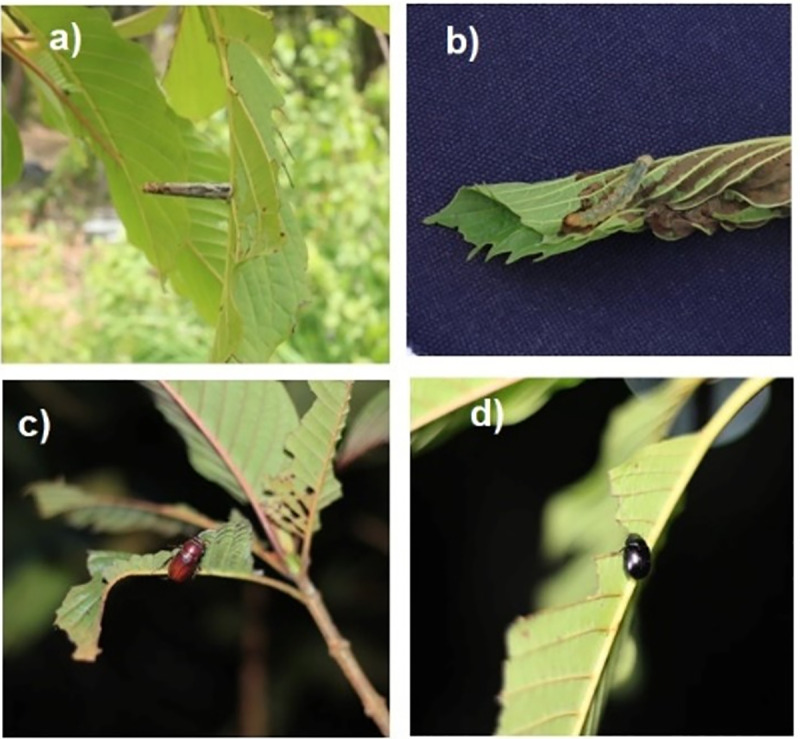
Read the full study, where the above image can be found: https://pmc.ncbi.nlm.nih.gov/articles/PMC12040156
Researchers at Kasetsart University and Chulalongkorn University in Bangkok, Thailand found that when insects like beetles, butterflies, and true bugs feed on kratom, the plant produces more mitragynine as a defense mechanism. This increase is also linked to higher leaf acidity.
Plants produce special chemicals called secondary metabolites (SMs) to protect themselves from environmental challenges like insect attacks, harsh weather, and competition with other organisms. These compounds—including alkaloids, flavonoids, and tannins—help plants defend against pests, regulate nutrient use, and even attract beneficial organisms like pollinators.
Some insects have adapted to use these chemicals for their own benefit, either as protection against predators or as a way to improve their health. For example, certain moths store toxic plant compounds to deter predators, while other herbivores choose plants rich in SMs to boost their immunity.
When insects feed on kratom leaves, the plant responds by producing more bitter and protective chemicals, like alkaloids, to defend itself. At the same time, the leaves become more acidic, which makes them less appealing to insects. This shows how kratom plants and herbivores interact in a complex way—where insect activity influences the plant’s chemistry, and in turn, the plant adapts to protect itself.
By understanding these interactions, farmers can develop strategies to manage insect activity while enhancing kratom’s chemical content naturally, reducing the need for pesticides and improving crop sustainability.
